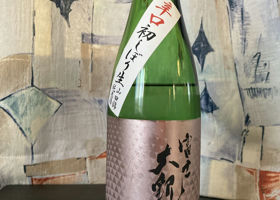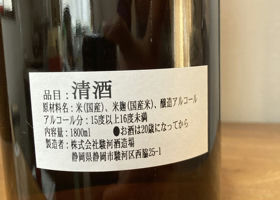Fuji Taikan山田錦 純米 初しぼり辛口生酒


tomy
This is good. It has a melon-like aroma that passes through the nose, and the flavor is robust and sharp. Whether you like modern or orthodox sake, this is a sake for everyone. Although the price has gone up, it is still affordable. Good sake.
1650 including tax
Japanese>English











































